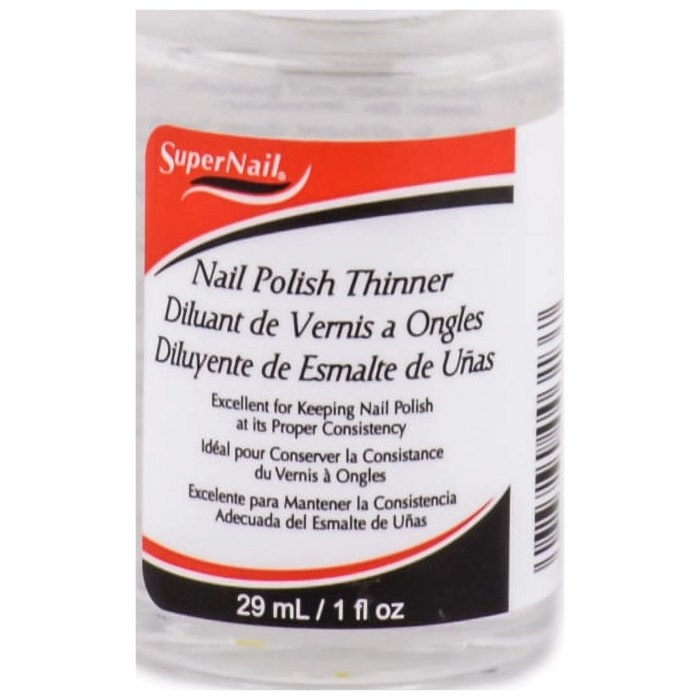How Do You Fix Thick Nail Polish?
Understanding Thick Nail Polish
How do you fix thick nail polish – Thick nail polish is a common problem that can affect the application and overall look of your manicure. Several factors contribute to this thickening, leading to frustrating application difficulties and potentially even damaging your nails. Understanding these causes and implementing preventative measures can significantly improve your nail care routine.
Causes of Thick Nail Polish
Nail polish thickens due to several factors, primarily evaporation of the solvents. Exposure to air, temperature fluctuations, and improper storage all accelerate this process. Additionally, the chemical composition of the polish itself plays a role; some polishes naturally thicken faster than others.
Negative Effects of Thick Nail Polish
Using thick nail polish leads to several undesirable consequences. Application becomes streaky and uneven, resulting in an unprofessional finish. It can also be difficult to achieve a smooth, even coat, requiring multiple layers that may chip more easily. Thick polish can clog brushes, shortening their lifespan, and potentially causing damage to the nail bed if applied too thickly.
Examples of Nail Polish Thickeners and Their Impact
While most thickening is due to solvent evaporation, some ingredients in nail polish can contribute to a thicker consistency. Certain resins and polymers, while providing benefits like increased durability, can also increase viscosity. These are often not explicitly listed on the label, making it difficult to pinpoint specific culprits. The impact is always a less smooth application and a higher likelihood of chipping.
Comparison of Thin and Thick Nail Polish Consistency
| Characteristic | Thin Nail Polish | Thick Nail Polish |
|---|---|---|
| Consistency | Smooth, flows easily | Clumpy, viscous, difficult to spread |
| Application | Even, streak-free | Streaky, uneven, requires multiple coats |
| Drying Time | Relatively quick | Longer drying time |
| Durability | Can vary depending on formula | May chip more easily due to uneven application |
Thinning Thick Nail Polish

Source: byrdie.com
There are several methods to restore the consistency of thick nail polish. Using common household items or dedicated nail polish thinner, you can revitalize your favorite shades and extend their lifespan. However, it’s crucial to follow safe practices to avoid damaging the polish or causing harm.
Thinning Nail Polish with Household Items
Adding a small amount of nail polish remover (acetone-based or acetone-free) or even a drop of clear nail polish can thin the formula. However, this method requires careful addition and mixing to avoid over-thinning or creating a lumpy texture. Experimentation is key, starting with a tiny amount and adding more as needed.
Step-by-Step Guide: Thinning with Nail Polish Thinner, How do you fix thick nail polish
- Remove the nail polish brush from the bottle.
- Add 2-3 drops of nail polish thinner (avoid adding too much at once).
- Carefully replace the brush and gently swirl the bottle to mix the thinner and polish.
- Test the consistency on a piece of paper or a spare nail.
- Add more thinner as needed, repeating steps 3 and 4, until desired consistency is reached.
Best Practices for Safely Thinning Nail Polish
Always work in a well-ventilated area, as nail polish thinner can release fumes. Avoid excessive shaking, which can introduce air bubbles. Test the thinned polish on a small area before applying it to your nails to ensure the consistency is suitable. If the polish becomes too thin, it may not adhere properly.
Visual Guide: Mixing Thinner into Nail Polish
Imagine a clear glass bottle of thick nail polish. Slowly add 2-3 drops of thinner to the side of the bottle, allowing them to gently sink to the bottom. Then, using a slow, swirling motion, gently mix the thinner into the polish, avoiding vigorous shaking. The goal is to achieve a uniform consistency without creating air bubbles.
Preventing Thick Nail Polish
Preventing nail polish from thickening in the first place is far easier than trying to thin it out. Proper storage and careful purchasing habits can significantly extend the life of your nail polish collection.
Factors Contributing to Nail Polish Thickening

Source: walmartimages.com
Temperature fluctuations are a major factor. Extreme heat can accelerate solvent evaporation, while cold temperatures can cause the polish to become more viscous. Exposure to air and sunlight also contributes to thickening, as does leaving the bottle open for extended periods.
Proper Nail Polish Storage
- Store nail polish in a cool, dark place, away from direct sunlight and heat.
- Keep the bottle tightly closed after each use.
- Avoid storing nail polish in areas with significant temperature fluctuations.
- Consider using a nail polish organizer to keep bottles upright and prevent accidental spills.
Tips for Purchasing Nail Polish
When buying nail polish, check the consistency before purchasing. A slightly thicker polish is often preferable to a very thin one that will require multiple coats. Opt for brands known for quality and longevity.
Recommended Practices for Extending Nail Polish Lifespan
- Clean the bottle rim after each use to prevent residue buildup.
- Use a quality nail polish remover to prevent residue from affecting future applications.
- Avoid over-filling the bottle to allow room for air.
Alternative Solutions: How Do You Fix Thick Nail Polish
Using a base coat is a great way to improve nail polish application and longevity. Different types of base coats offer various benefits, impacting the overall result of your manicure. Applying the base coat correctly is key to achieving the best results.
Benefits of Using a Nail Polish Base Coat
A base coat creates a smooth, even surface for the nail polish to adhere to. This prevents staining, improves the overall look, and can help the nail polish last longer. It acts as a barrier between the nail and the polish, protecting the nail from discoloration and damage.
Different Types of Base Coats and Their Impact
Different base coats cater to various needs. Some are designed to improve adhesion, while others focus on strengthening nails or preventing staining. Selecting the right base coat depends on your specific nail needs and the type of nail polish you are using.
Applying a Base Coat Effectively
Apply a thin, even layer of base coat to the nail, ensuring to cover the entire nail surface. Allow it to dry completely before applying the color coat. This ensures proper adhesion and prevents chipping.
Alternative Nail Polish Application Techniques
- Apply thin coats, allowing each coat to dry completely before applying the next.
- Use a quality nail polish brush for smoother application.
- Consider using a nail polish thinner to improve the flow of thick polish.
- Try using a top coat to create a smoother, more even surface.
When to Replace Nail Polish
Knowing when to replace nail polish is essential for maintaining the quality of your manicures and ensuring you’re using safe products. Several signs indicate that your nail polish has reached the end of its lifespan and needs to be discarded.
Signs Indicating Nail Polish Needs Replacement
Changes in color, texture, or consistency are major indicators. A thickened, clumpy texture, a significant change in color, or a separation of the polish into different layers are all signs of deterioration. An unpleasant odor may also indicate chemical breakdown.
Checklist for Determining if Nail Polish is Beyond Repair
- Is the nail polish significantly thickened or clumpy?
- Has the color changed noticeably?
- Does the nail polish have an unusual or unpleasant odor?
- Does the nail polish separate into layers?
- Does the nail polish apply unevenly or streakily, even after thinning attempts?
Recognizing Changes in Nail Polish Chemical Composition
Changes in odor, texture, and color often signify changes in the chemical composition of the polish. These changes can indicate the breakdown of ingredients and may lead to reduced performance and potentially even irritation to the skin.
Dealing with thick nail polish can be frustrating, but there are solutions! One approach is to add a few drops of nail polish thinner. If you’re working with a particularly stubborn bottle, perhaps a vibrant color like the boston red nail polish , you might find that thinning it improves application significantly. Remember, even with a perfectly thinned polish, applying thin coats is key to achieving a smooth, chip-resistant finish.
Safe and Responsible Disposal of Old Nail Polish
Never pour old nail polish down the drain. Instead, check your local regulations for proper disposal. Many communities offer hazardous waste collection programs where you can safely dispose of old nail polish.
Frequently Asked Questions
Can I use acetone to thin nail polish?
While acetone is a strong solvent, it’s generally not recommended for thinning nail polish as it can damage the formula and potentially make the polish brittle or cause it to separate.
How long does nail polish typically last before thickening?
This varies depending on the brand, formula, and storage conditions, but generally, nail polish can start to thicken within a few months to a year.
Can I reuse nail polish remover to thin my nail polish?
No, using already used nail polish remover is not recommended. It may contain residue that could negatively affect the polish’s consistency and quality.
What are the signs that my nail polish has gone bad?
Signs include a significantly thickened consistency, a change in color or odor, and a separation of pigments or components within the bottle.















